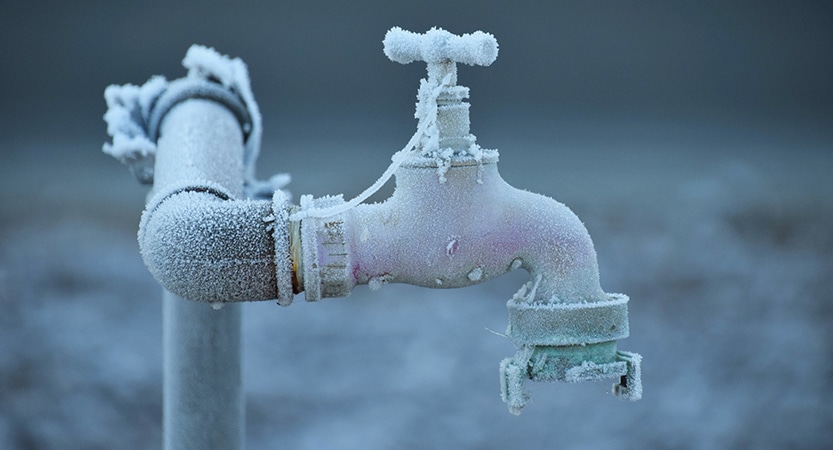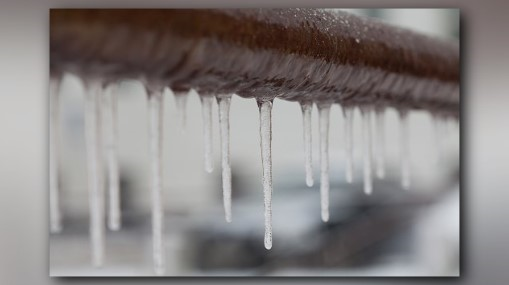Protecting Against Frozen Pipes: Effective Tips for Winter
Protecting Against Frozen Pipes: Effective Tips for Winter
Blog Article
Are you currently searching for know-how about Winter Plumbing Precautions: Preventing Frozen Pipes?

Cold weather can ruin your pipes, particularly by freezing pipelines. Right here's exactly how to prevent it from happening and what to do if it does.
Introduction
As temperature levels decrease, the danger of frozen pipelines boosts, possibly resulting in costly repair work and water damage. Recognizing how to prevent frozen pipes is critical for homeowners in chilly climates.
Recognizing Icy Pipes
What creates pipelines to ice up?
Pipelines freeze when exposed to temperature levels below 32 ° F (0 ° C) for prolonged durations. As water inside the pipes ices up, it expands, taxing the pipe walls and potentially creating them to burst.
Risks and damages
Icy pipelines can bring about supply of water disturbances, home damages, and expensive repair work. Burst pipes can flood homes and trigger considerable architectural damages.
Indications of Frozen Water Lines
Determining frozen pipes early can stop them from breaking.
Exactly how to determine frozen pipelines
Seek lowered water flow from taps, unusual smells or sounds from pipes, and noticeable frost on subjected pipes.
Avoidance Tips
Protecting prone pipes
Wrap pipelines in insulation sleeves or use heat tape to safeguard them from freezing temperatures. Focus on pipes in unheated or exterior areas of the home.
Heating strategies
Keep indoor spaces adequately heated up, especially areas with plumbing. Open cupboard doors to enable cozy air to distribute around pipelines under sinks.
Shielding Exterior Pipes
Yard pipes and exterior taps
Detach and drain garden hose pipes before winter. Install frost-proof faucets or cover exterior taps with shielded caps.
What to Do If Your Pipelines Freeze
Immediate actions to take
If you suspect icy pipelines, keep taps open up to eliminate pressure as the ice melts. Utilize a hairdryer or towels soaked in warm water to thaw pipes slowly.
Long-Term Solutions
Architectural modifications
Consider rerouting pipelines away from outside walls or unheated locations. Add added insulation to attics, cellars, and crawl spaces.
Updating insulation
Purchase high-quality insulation for pipes, attic rooms, and walls. Correct insulation helps preserve regular temperatures and decreases the danger of icy pipelines.
Conclusion
Preventing frozen pipes needs aggressive actions and fast responses. By comprehending the reasons, signs, and preventive measures, property owners can protect their plumbing during cold weather.
6 Proven Ways to Prevent Frozen Pipes and Protect Your Home
Disconnect and Drain Garden Hoses
Before winter arrives, start by disconnecting your garden hoses and draining any remaining water. Close the shut-off valves that supply outdoor hose bibs and leave the outdoor faucet open to allow any residual water to drain. For extra protection, consider using faucet covers throughout the colder months. It’s also important to drain water from any sprinkler supply lines following the manufacturer’s directions.
Insulate Exposed Pipes
Insulating your pipes is an effective way to prevent freezing. Pipe insulation is readily available at home improvement stores and is relatively inexpensive. Pay close attention to pipes in unheated areas such as the attic, basement, crawl spaces, or garage. Apply foam insulation generously to create a buffer against the cold. You can also wrap your pipes in heat tape or thermostat-controlled heat cables for added warmth.
Seal Air Leaks
Inspect your home for any cracks or openings that could let in cold air. Seal any holes around the piping in interior or exterior walls, as well as the sill plates where your home rests on its foundation. Additionally, make sure to keep your garage door closed unless you’re entering or exiting. Leaving it open creates a significant air leak that can lead to frozen pipes.
Allow Warm Air Circulation
During cold snaps, it’s essential to allow warm air to circulate evenly throughout your home. Leave interior doors ajar to promote better airflow. Open kitchen and bathroom cabinets to help distribute heat consistently around the rooms. If you have small children or pets, be sure to remove any household chemicals or potentially harmful cleaners from open cabinets for safety.
Let Faucets Drip
A small trickle of water can make a big difference in preventing ice formation inside your pipes. When temperatures drop significantly, start a drip of water from all faucets served by exposed pipes. This continuous flow helps prevent the water from freezing. Additionally, running a few faucets slightly can relieve pressure inside the pipes, reducing the chances of a rupture if the water inside does freeze.
https://choateshvac.com/6-proven-ways-to-prevent-frozen-pipes-and-protect-your-home/

I came across that blog post on 6 Ways to Prevent Frozen Pipes when scouting around the search engines. Enjoyed reading our post? Please share it. Help other people find it. Thank you for your time invested reading it.
Call Today Report this page